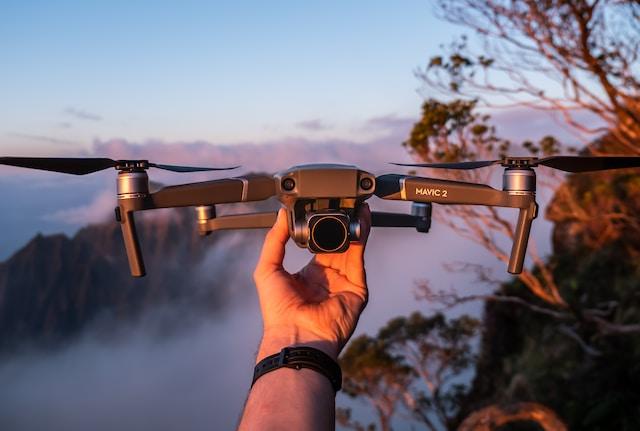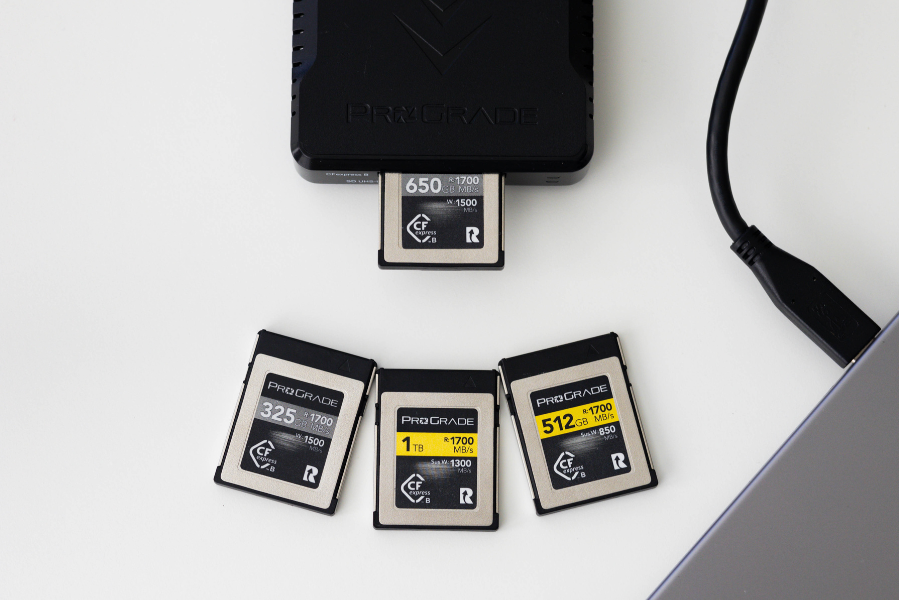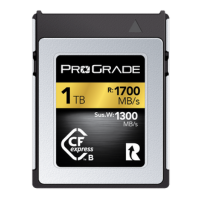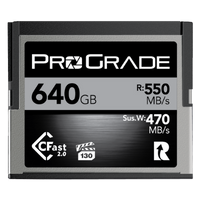The rapid evolution of digital imaging has necessitated advanced storage solutions. At the heart of these developments lies flash memory, evolving from SLC (Single-Level Cell) to the more recent TLC (Triple-Level Cell). But with such a range of options, understanding the perfect memory fit for your professional photography and videography needs can become a daunting task.
To better appreciate the unique features, benefits, and limitations of SLC and TLC flash memory, it is important to first understand their development and evolution. This historical perspective starts with the advent of SLC (Single-Level Cell) flash memory, which stores one bit per cell. Then we’ll discuss the evolution of MLC (Multi-Level Cell) memory, a term that encompasses technologies that store more than one bit per cell, such as TLC (Triple-Level Cell) and QLC (Quad-Level Cell). This context provides valuable insights into how these technologies have adapted to meet ever-changing digital imaging needs.
Flash Memory: A Historical Perspective
NAND flash data storage was primarily based on SLC programming in its early days in the late 90s. SLC’s hallmark was its reliability and speed, owing to a single bit stored in each memory cell, despite the two-step process of erasing and writing data.
In the mid-2000s, MLC emerged, storing two bits of data per cell and significantly reducing flash storage costs. However, this came at the expense of slower speeds and reduced endurance due to double writing requirements for each cell.
Subsequently, the mid-2010s introduced TLC and QLC memories, further lowering costs and increasing capacity. But with these advancements, performance declined, resulting in TLC and QLC being relegated to specific applications, with QLC often used for cold storage or offline data backup.
SLC vs. TLC: Understanding the Core Differences
Today, SLC and TLC memories dominate digital imaging applications. At their core, SLC and TLC are two distinct types of flash memory that differ primarily in how much information can be stored in a single cell. The major difference between them is the number of bits that can be stored in a cell in memory: SLC stores one bit per cell, while TLC stores three bits per cell.
This results in higher data density and lower cost for TLC memory. However, TLC has traditionally been slower than SLC memory and has fewer write cycles. This can be a huge issue for professional photographers or videographers who need the lightning-fast speeds and reliable performance that SLC memory provides.
SLC vs. TLC: Performance vs. Cost
SLC is known for its superior reliability and raw performance margin. When we say ‘performance margin,’ we’re referring to how much faster and more efficiently SLC memory can perform tasks compared to other types of memory. This exceptional speed and efficiency make SLC the preferred choice for high-performance imaging applications, such as RAW 4K, 6K, or 8K video capture. SLC, like the ProGrade Digital Cobalt product line, remains the favored choice for professionals prioritizing maximum data capture performance and reliability, with cost being a secondary factor.
TLC, on the other hand, with its lower cost per gigabyte makes a strong case for budget-conscious users. TLC memory, akin to ProGrade Digital Gold product line, caters to a broader range of imaging applications. Advances in memory controller and firmware capabilities have enabled TLC to hold its own in high-resolution video capture applications.
However, it’s important to note that while TLC may suffice in many cases, SLC’s unmatched reliability and performance still make it the preferred choice for professionals engaged in high-action and high-resolution projects, ensuring there’s no compromise on quality.

Caption: SLC memory cards offer top-notch speed for demanding applications.
SLC vs. TLC: Balancing Performance and Affordability.
While SLC memory is often the preferred choice for high-performance applications, many TLC memory cards available in the market cater to a wide range of professional needs as well. TLC memory is great for applications that require speed and high storage capacity.
TLC memory cards provide a balance between storage capacity and cost-effectiveness. As such, they are an excellent option for photographers and videographers working on various projects, extending their versatility across different professional scenarios.

Caption: TLC memory stands out in battery-powered devices, such as drones, due to its exceptional efficiency and performance capabilities.
SLC and TLC in Digital Imaging: Key Factors to Consider
When selecting the right flash memory for digital imaging applications, there are a few key factors to consider:
- Endurance: This refers to how many write cycles, or times data can be written to the memory, the flash memory can handle before it wears out or becomes unreliable. SLC offers higher endurance and is suitable for frequent writes and high durability. This is particularly important for videographers who fill a card, off-load those files, format the card and repeat. Higher endurance will enable the card to last longer under these conditions, ensuring your investment stands the test of time.
- Performance: How quickly can data be written and read? SLC is generally faster than TLC, making it the better choice for professionals who need lightning-fast speeds. The highest write speeds offered by SLC are critical for capturing 6K, 8K and beyond, allowing creatives to capture stunning visuals without compromise.
- Data Density: How much data can be stored in a single cell? TLC has the edge here, as it can store three bits of data per cell, compared to SLC’s one bit. When you need high capacity TLC will give you higher capacity at a better price than SLC, providing ample storage space for your creative projects without breaking the bank.
- Cost: Is SLC or TLC going to give you the most bang for your buck? If money is tight, then TLC may be the better option, but if you need the fastest and most reliable performance, then SLC is a must. Evaluating your budget and performance requirements can help you make the best decision for your specific needs, optimizing both cost and performance.
Best Practices for Choosing the Right Flash Memory
Choosing the right flash memory can be overwhelming, but these best practices can guide you through the process. Start by assessing your specific digital imaging needs, such as the type of camera, resolution, and recording format. What type of camera do you have, and what is its resolution? Do you record in RAW format or JPEG?

Caption: Your camera type, resolution, and recording format impact your choice of memory.
From there, determine your budget and decide whether you prioritize performance, reliability, or cost-efficiency. Don’t be afraid to invest a little more upfront for a quality product that will last you longer. Finally, do your research and look into reputable brands and products that cater to professionals and prosumers.
By understanding your specific requirements, you can make an informed decision when choosing between TLC and SLC flash memory. By doing so, you’ll ensure that you select the most suitable option for your photography needs, which will ultimately result in better-quality images and a more enjoyable experience overall.
Conclusion: Making the Right Choice for Your Digital Imaging Needs
Selecting the appropriate flash memory for digital imaging applications depends on the unique advantages and drawbacks of both SLC and TLC memory cards. SLC memory is ideal for professionals seeking reliable performance, while TLC memory offers a more cost-effective storage solution.
While SLC comes at a premium, its value in terms of speed, reliability, and performance cannot be overlooked. TLC, with its lower cost, is an attractive option for many applications. Therefore, it’s about finding a balance between performance, affordability, and longevity that fits your needs, without compromising quality or exceeding your budget.
The crucial takeaway is that understanding your needs, from resolution to recording format, empowers you to make the right flash memory choice for your digital imaging applications. With thorough knowledge and research, you can optimize your photography experience without sacrificing quality or exceeding your budget.





